7 Fundamental Math Concepts Every 4th Grader Needs to Excel
7 Fundamental Math Concepts Every 4th Grader Needs to Excel

In 4th grade, foundational skills set children take a big leap in their math journey. It’s no longer just about memorizing facts or counting blocks—it’s about thinking deeply, solving real-world problems, and applying what they know in new ways. From multiplying large numbers to grasping the world of fractions and decimals, math concepts for fourth-grade math lays the foundation for middle school and beyond.
But why is this year such a big deal when it comes to math?
Math is more than just numbers; it’s about nurturing problem solving skills, problem-solving minds and confident learners in elementary school . Understanding key math skills for elementary students and effective teaching strategies sets a strong foundation for future academic success. These essential skills not only support classroom performance but also strengthen logical thinking and real-world application.
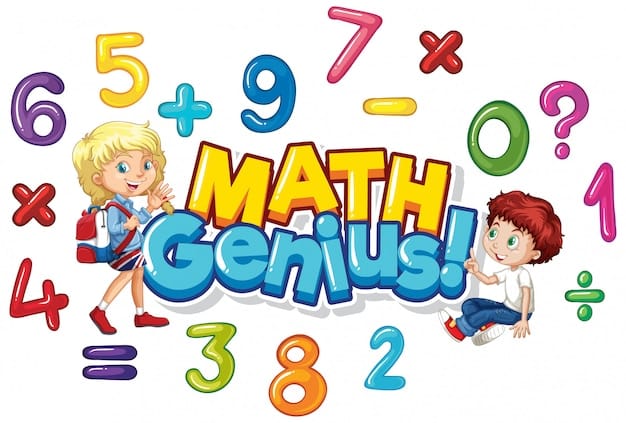
In 4th grade math, students begin to encounter more advanced math concepts for 4th graders, such as multi-digit multiplication, fractions, and interpreting data. Mastery of these key math skills for elementary students helps build the confidence they need to solve challenges independently and prepare for higher level math.
Let’s dive into the importance of learning math in elementary school, explore the 7 most essential key lessons for fourth graders as outlined in the fourth grade math curriculum , and discover how you—as a parent or teacher—can help a child succeed and even enjoy math!
Why Learning Math Matters in Elementary School?
Sure, memorizing multiplication tables is helpful—but elementary math is about so much more.
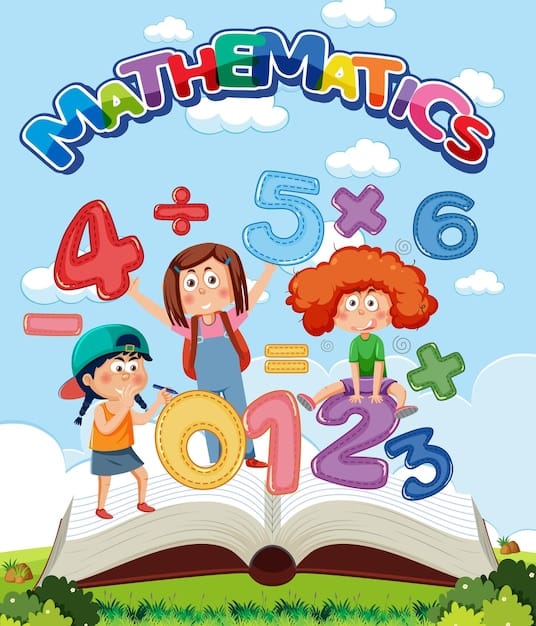
At this stage, students begin to develop logical reasoning, pattern recognition, and number sense. These skills form the bedrock for hands on learning and understanding more advanced concepts in algebra, geometry, and data science later in life. Setting clear 4th grade math goals allows you to track progress and focus on critical learning targets. Students should work toward mastering math problem solving tips and understanding multi-step operations with confidence.
Regular assessment of 4th grade math goals helps identify learning gaps early, which is where effective teaching strategies come in hand . This is where math problem solving tips come in handy—guiding students through each step and helping them think analytically.
But the benefits to a child's math education for fourth graders go beyond the classroom. Kids who develop math confidence early on through real life examples are more likely to think critically, stay curious, and approach problems with a solution-seeking mindset. These are skills that matter not just in math—but in life.
So what are the right math concepts for 4th graders to master?
Let’s break them down.
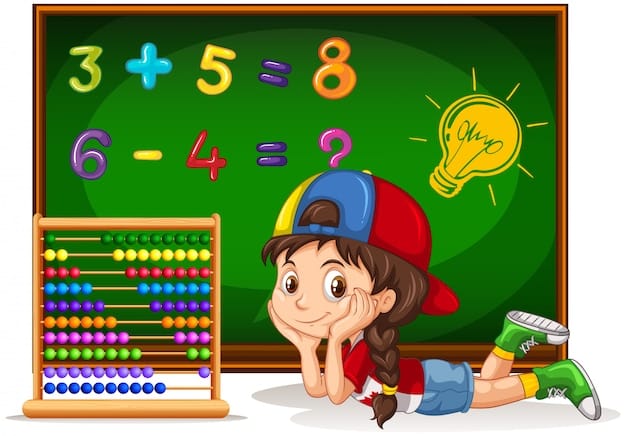
Essential Math Lessons for Fourth Grade Learners
The following seven concepts are the core of 4th grade math success. They help kids build confidence, solve problems, and develop critical thinking skills that will serve them throughout school and life.
These operations involving multi digit whole numbers are a major part of math concepts for 4th graders. Students learn to perform long division, multi-digit multiplication and long division, two major fundamental math topics for kids that require consistent practice and strategic thinking.
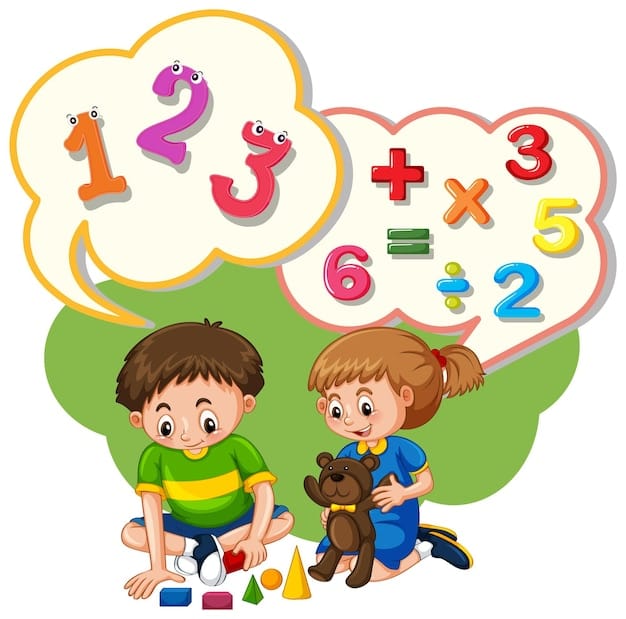
Repeated exposure to word problems and visual models can make fundamental math topics for kids like multiplication much easier to grasp.
Don’t forget to connect multiplication to real-world examples—like understanding equivalent fractions and calculating the cost of items or groups of objects—to reinforce these math concepts for 4th graders.
Creating a fun and interactive environment in math class is key to making 4th grade math enjoyable and effective. When math fun is integrated with hands-on learning, math games, and educational apps, students can learn math concepts in a fun and effective way. These approaches help children solve problems, perform long division, work with multi-digit whole numbers, and explore geometric figures with confidence. Using real-life examples, everyday life scenarios, and practical ways to explain advanced math fosters a deep understanding of how math applies beyond the classroom.
As part of the math curriculum, students learn to interpret data, compare fractions, and operate with two-digit numbers, building a foundational skills set needed for academic success. By incorporating flexible learning options and educational games, teachers and parents can support fourth graders in developing not only math facts but also a love for solving complex math problems. The ultimate goal of teaching fourth grade math is to instill confidence, boost problem solving, and ignite curiosity that will support a child’s future success in mathematics.
Multiply Large Numbers with Confidence
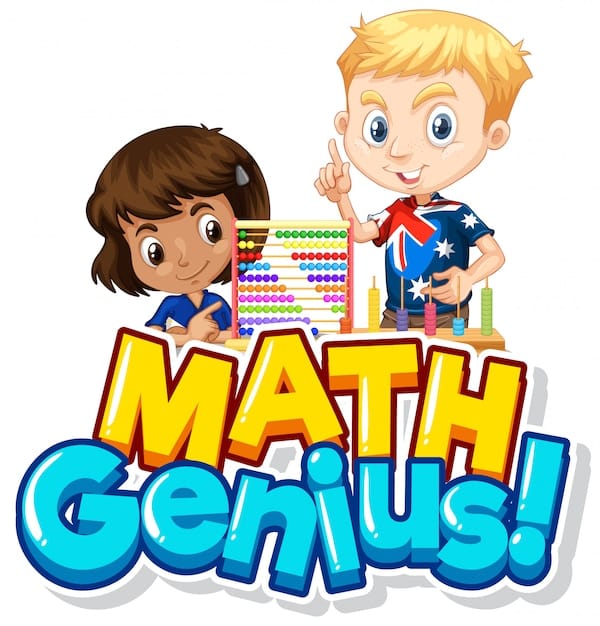
By the time students reach fourth grade, they’re ready to move beyond single-digit multiplication. This is where they learn to multiply 2-digit numbers by 2-digit numbers, using both standard algorithms and area models.
For example:
34 × 27 = ?
It might seem overwhelming at first, but with structured practice, students gain confidence quickly. They begin to understand place value, regrouping, and multiplication patterns, which enhances their computational fluency and their ability to solve word problems .
Fun tip: Use real-life examples in a fun and effective way—like multiplying the number of seats in rows at a movie theater or total pages in multiple books—to make large-number multiplication feel meaningful and exciting.
Divide with and Without Remainders
Division in fourth grade goes beyond just “how many times does 3 go into 9.” Now, kids are expected to divide multi-digit numbers, often with remainders.
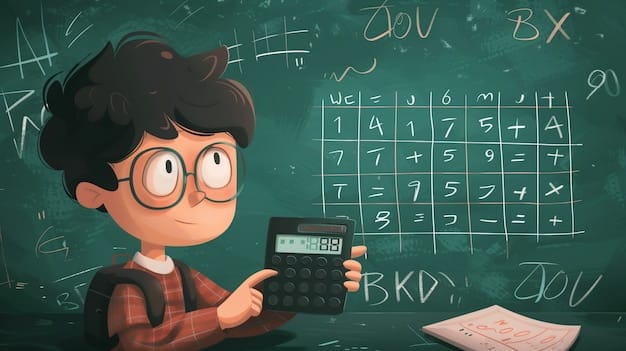
Gaining a solid understanding that:
45 ÷ 4 = 11 R1
is just the beginning. Students also explore how division connects to multiplication and begin to understand inverse operations, which is a critical pre-algebra skill.
Division is also foundational for fractions and ratios, which makes it all the more important to master this year.
Try this at home: Have your child divide up snacks, toys, or even time for screen usage equally between family members—bonus points if there's a remainder involved!
Understand and Identify Factors from 1 to 100
What are the factors of 36? (Hint: 1, 2, 3, 4, 6, 9, 12, 18, 36)
In fourth grade, children start to identify all the factors of a number, which deepens their understanding of basic probability, multiples, divisibility, and prime numbers.
Why does this matter?
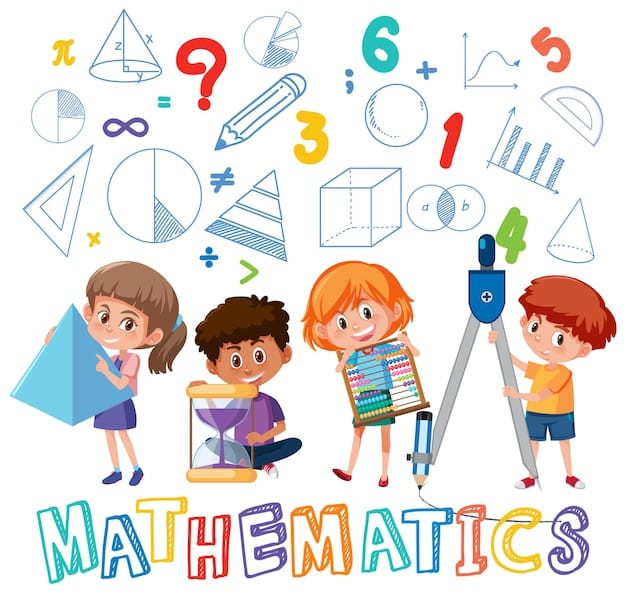
Recognizing factors helps with:
Simplifying fractions
Finding common denominators
Recognizing number patterns
This skill sets the stage for later topics like advanced concepts such as greatest common factors (GCF) and least common multiples (LCM)—key concepts in middle school math.
Fun activity: Create a factor rainbow chart or a factor tree challenge! Kids love visual learning, and it helps concepts stick.
SUPPORT AT HOME
Making learning fun with fourth grade math skills doesn’t stop when school ends. Developing math skills at home is one of the most effective ways to reinforce classroom instruction and make math a daily habit.
Parents can support fundamental math topics for kids by integrating them into fun activities like cooking, budgeting, or board games.
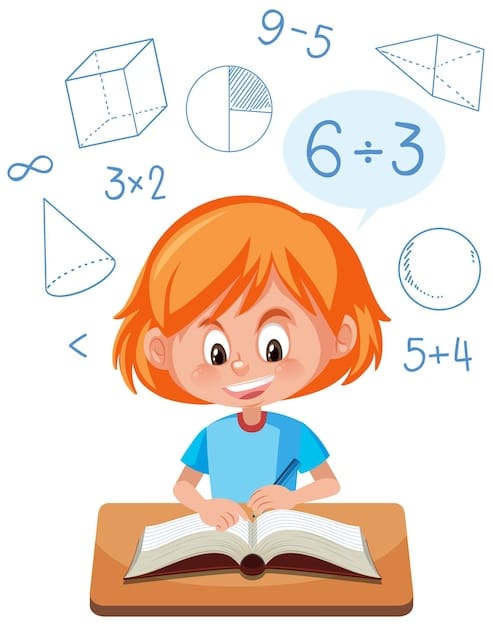
By focusing on developing math skills at home, you encourage critical thinking, patience, and curiosity—all vital for mastering fundamental math topics for kids in a low-pressure setting.
Solve Real-World Word Problems
Now comes the fun part—applying math to everyday life.
Word problems help students use math to solve real-world situations. Whether it’s figuring out how many cupcakes are needed for a party or calculating change from a $10 bill, these problems teach students to:
Read carefully
Identify relevant numbers and operations
Plan their approach
Check their answers
In fourth grade, word problems often involve multiple steps, combining operations like multiplication and division, or subtraction and addition.
Math tip for parents: When doing homework, ask your child, “What is the question asking you?” and “What do you already know?” This encourages critical thinking.
Remember: A strong problem solver isn’t just someone who gets the right answer—it’s someone who understands the process.
Word problems are crucial in helping students apply their math problem solving tips in real-world scenarios. Encourage them to identify keywords, underline relevant information, and write out each step.
Practice with different types of word problems—especially those involving math concepts for 4th graders like fractions or area. Integrating math problem solving tips such as estimating answers or checking their work can boost accuracy.
Real-life math scenarios also provide opportunities to reinforce math concepts for 4th graders in meaningful ways. Use math problem solving tips to guide discussions around budgeting, travel time, or grocery shopping.
Recognize and Work with Larger Numbers
Place value takes on new meaning in fourth grade. Students begin working with numbers in the thousands, ten-thousands, and even up to one million.
They learn to:
Read and write large numbers
Compare and order them
Round numbers to the nearest place value
Understand patterns in the base-10 number system
These lessons develop number sense, which helps students understand that numbers aren’t just digits—they have value and structure.
Practical idea: Ask your child to estimate the number of people in a stadium or count how many books are in the library. These conversations help normalize large numbers.
Build a Strong Foundation in Fractions
Fractions can feel intimidating at first, but fourth grade is the perfect time to lay a solid foundation for learning fraction equivalence .
Students learn to:
Compare fractions using number lines and benchmarks
Find equivalent fractions
Add and subtract fractions with like denominators
Begin working with mixed numbers and improper fractions
Why are fractions so important?
Because they lead directly to ratios, percentages, and proportions—critical math tools in middle and high school.
Use visuals: Fraction strips, pizza models, or measuring cups can turn a complex concept into a fun, hands-on activity that leads to understanding proportional relationships .
Real-life connection: Let your child help in the kitchen. Doubling a recipe or dividing one in half is a great way to practice fractions naturally.
Compare and Order Decimals Accurately
Decimals are introduced in fourth grade, often alongside decimal notation and fractions. Students learn how to:
Read and write decimals (tenths and hundredths)
Compare and order decimals
Understand decimal place value
Relate decimals to money and measurements
This skill is crucial because decimals show up everywhere—from shopping to cooking to measuring in science experiments.
By mastering decimals early, kids gain confidence and comfort with precise calculations.
Try this: Ask your child to compare $4.35 and $4.53 and explain which is greater and why. It's a simple exercise that reinforces understanding.
5 Math Goals for Fourth Graders to Aim For
Goal setting is powerful. When children have clear, achievable goals, they become more motivated and focused. Here are some math goals every 4th grader can work toward:
✅ Master multiplication and division facts
Speed and accuracy with basic facts lead to greater confidence in multi-step problems.✅ Solve multi-step word problems
Being able to understand, plan, and execute multi-step solutions is a sign of strong math reasoning.✅ Understand and use fractions fluently
Fourth grade is when fractions move from introduction to real fluency.✅ Practice problem-solving regularly
Set a routine for math puzzles, brain teasers, or real-life math scenarios each week.✅ Play math games and accept challenges
Whether it’s an app, board game, or puzzle—games make math exciting and social!
How to Support Your 4th Grader’s Math Learning at Home
Parents are a child’s first and most important teacher. Even 15–20 minutes a day of positive math interaction can make a huge difference.
Here are a few simple but effective ways to reinforce fundamental math topics for kids at home:
🎲 Use flashcards or online games to drill multiplication and division in a fun way.
Ask your child to explain their thinking. It strengthens understanding and confidence.
Integrate math into everyday tasks, like comparing prices, measuring ingredients, or splitting up a bill.
💬 Encourage a growth mindset. Remind them that mistakes are a sign of learning and improvement.
And most importantly—celebrate effort, not just right answers.
Fourth grade is a pivotal stage in a child's math education, where foundational learning transforms into mastery of more advanced math concepts. As part of the fourth grade math curriculum, fourth grade students dive into multi-digit multiplication, perform long division, and explore fraction equivalence and decimal notation. These key math concepts for 4th graders help build a solid foundation for higher-level math in middle school and beyond. Through engaging teaching strategies and hands-on learning, students develop crucial problem solving skills and begin to tackle abstract concepts like negative numbers, pre-algebra concepts, and basic probability. A deep understanding of place value, multi-digit numbers, and multi-step problems also supports their ability to solve problems in both math class and everyday life.
Math Concepts – FAQs
What are the most important math concepts for 4th graders?
The most important math concepts for 4th graders include mastering multi-digit multiplication and division, especially with remainders. These foundational skills prepare students for more advanced math concepts in later grades. Understanding fractions—comparing, adding, subtracting, and identifying equivalent fractions—is crucial for tackling multi-step problems and operations with unlike denominators. Decimals are introduced alongside fractions, helping students work with decimal notation, money, and measurements. Word problems challenge students to interpret data and apply math in real world situations. These key math skills for elementary students and the ability to solve problems set the stage for future academic success in middle school and beyond. Practicing these consistently throughout the school year supports a solid foundation in math education.
How can I help my child with multiplication and division?
Start by breaking down the process into smaller, manageable steps. For multi-digit multiplication, help your child understand place value and repeated addition. For division, focus on grouping and sharing, eventually working up to performing long division. Use visual aids like base-ten blocks or number lines to support hands-on learning. Reinforce these ideas by developing math skills at home—make it part of a daily routine. Use math games, flashcards, or educational apps to make learning fun. Connect math to everyday life by calculating total costs or splitting snacks. These are effective ways to strengthen fundamental math topics for kids, ensure mastery of math facts, and improve problem-solving skills, preparing them for advanced math in the coming years.
What’s the best way to teach fractions to a 4th grader?
Teaching fractions to fourth grade students becomes easier with hands-on learning and real-life examples. Use tools like fraction bars, pie charts, and colored paper to visually demonstrate understanding fraction equivalence. Activities such as cooking and baking offer practical ways to use math—measuring ½ cup of flour or slicing a pizza into equal parts teaches comparing fractions and the importance of equivalent fractions. Reinforce vocabulary like numerator, denominator, and unlike denominators. Educational games that match or order fractions can make learning a fun and effective way to build a deep understanding. Mastery of fractions lays the groundwork for more advanced math concepts, including decimals, ratios, and proportional relationships, which are essential for future success in higher level math.
What geometry topics are covered in fourth grade?
In fourth grade math, students explore essential geometric figures and spatial reasoning skills. They learn to identify and classify shapes such as triangles, quadrilaterals, and polygons. Geometry lessons include recognizing symmetry, different types of angles (right, acute, obtuse), and lines (parallel, perpendicular, intersecting). Students also learn to calculate perimeter and area, helping them quantify space—core math concepts for 4th graders that connect to real-life examples like designing a garden or room layout. These topics not only strengthen understanding of shapes but also reinforce key lessons from the fourth grade math curriculum, building a solid understanding for pre-algebra concepts in the future.
How do I make my child feel more positive about math?
Building your child's confidence in math class starts with a growth mindset. Praise effort over correctness and teach that mistakes are part of the learning process. Celebrate small wins and focus on progress. Use educational games or interactive apps to make learning fun, and embed math into everyday life—measuring, budgeting, or planning routes. Show your child that math is not just abstract; it’s useful and everywhere. This approach builds emotional resilience and a love for problem-solving. Over time, they’ll view math as something they can master through practice. A confident, motivated student is more likely to succeed in advanced math, even when tackling abstract concepts.
How often should a 4th grader practice math at home?
Ideally, fourth graders should engage in 15–20 minutes of math practice per day. The key is consistency and variety. Use worksheets, math games, and real-world scenarios like budgeting or shopping to apply skills learned in the fourth grade math curriculum. Incorporate real-world situations that involve math problems to strengthen critical thinking and build connections. Use this time to review multi-digit numbers, subtract fractions, or even explore basic probability and coordinate plane concepts. This helps reinforce math concepts for 4th graders and encourages a habit of self-directed learning. Making time for developing math skills at home nurtures future academic success and makes math fun and approachable.